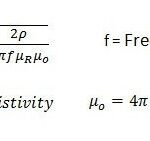What is 1G, 2G, 3G, 4G, and 5G?
Today, we’re going to explore the different generations of mobile technology, from 1G all the way to 5G. As we’ve discussed earlier, mobile technologies evolve to meet the growing demands for better speed, connectivity, and efficiency. Let’s take a deeper look at what each generation means and how they have changed over time.
1G – The First Generation
1G refers to the first generation of mobile networks, which emerged in the 1980s. It was a major step forward, but its capabilities were limited compared to modern technologies. 1G networks were based on analog signals, meaning they used radio waves to transmit voice calls without digital encoding. Here’s a quick breakdown of what 1G offered:
- Technology: Analog cellular network
- Speed: Very low speeds, suitable only for voice calls
- Key Feature: First time mobile phones were used for wireless communication
- Limitation: Poor call quality, limited range, and no data transfer
2G – The Second Generation
With 2G, which was introduced in the 1990s, we moved from analog to digital communication. This made mobile networks more efficient and secure, and it opened the door for text messaging (SMS) and limited data services. 2G brought about a significant improvement in mobile communication. Here’s a breakdown of 2G:
- Technology: Digital cellular network (TDMA, CDMA, GSM)
- Speed: 50 Kbps to 100 Kbps, enough for voice and basic text messaging
- Key Feature: Digital voice calls and SMS messaging
- Limitation: Limited data services, slow internet speeds
3G – The Third Generation
As mobile technology continued to evolve, 3G networks emerged in the early 2000s, offering much faster speeds and the ability to support data-driven applications like web browsing, video calls, and mobile internet. 3G technology made smartphones smarter by providing more bandwidth for a variety of services.
- Technology: WCDMA, HSPA, CDMA2000
- Speed: 384 Kbps to 2 Mbps, which allowed for mobile internet browsing, video calls, and faster downloads
- Key Feature: Fast mobile data, mobile internet, and video calling
- Limitation: Still not fast enough for streaming high-quality video or large data transfers
4G – The Fourth Generation
4G came about in the late 2000s and revolutionized mobile communication. With speeds that could reach up to 1 Gbps, 4G made it possible to stream high-definition video, enjoy lag-free video calls, and download large files in seconds. The move to 4G meant a huge leap in mobile broadband capabilities, and it brought us closer to seamless connectivity everywhere we go.
- Technology: LTE (Long-Term Evolution), WiMAX
- Speed: 100 Mbps (mobile), 1 Gbps (stationary)
- Key Feature: HD video streaming, real-time gaming, faster web browsing
- Limitation: Limited range in some areas, dependency on infrastructure
5G – The Fifth Generation
Now, 5G is the latest and most advanced mobile technology. It’s designed to offer ultra-fast data speeds, low latency, and massive connectivity to handle the growing number of devices and users in the modern world. 5G is not just about faster internet, but about enabling innovations like autonomous vehicles, smart cities, and massive IoT (Internet of Things) networks.
- Technology: NR (New Radio)
- Speed: 10 Gbps or more, allowing for faster downloads, real-time data sharing, and low latency
- Key Feature: Extremely low latency, high-speed data, massive device connectivity
- Limitation: Limited coverage in the early stages, high infrastructure cost
Comparing 1G, 2G, 3G, 4G, and 5G
| Generation | Technology | Speed | Key Features |
|---|---|---|---|
| 1G | Analog | Low | Voice calls |
| 2G | Digital (GSM, TDMA, CDMA) | Low | Voice calls, SMS |
| 3G | WCDMA, HSPA | Medium | Mobile internet, video calls |
| 4G | LTE | High | Mobile broadband, HD streaming, real-time gaming |
| 5G | NR (New Radio) | Very High | Ultra-fast internet, low latency, IoT, autonomous vehicles |
As we learned earlier, each generation of mobile networks has improved on the previous one, providing faster speeds, more reliable connections, and a broader range of services. With 5G, we are entering a new era of mobile technology, where everything from smart homes to self-driving cars will be powered by ultra-fast, low-latency connectivity. As 5G continues to roll out, the capabilities will expand, transforming how we connect and interact with the world around us.


